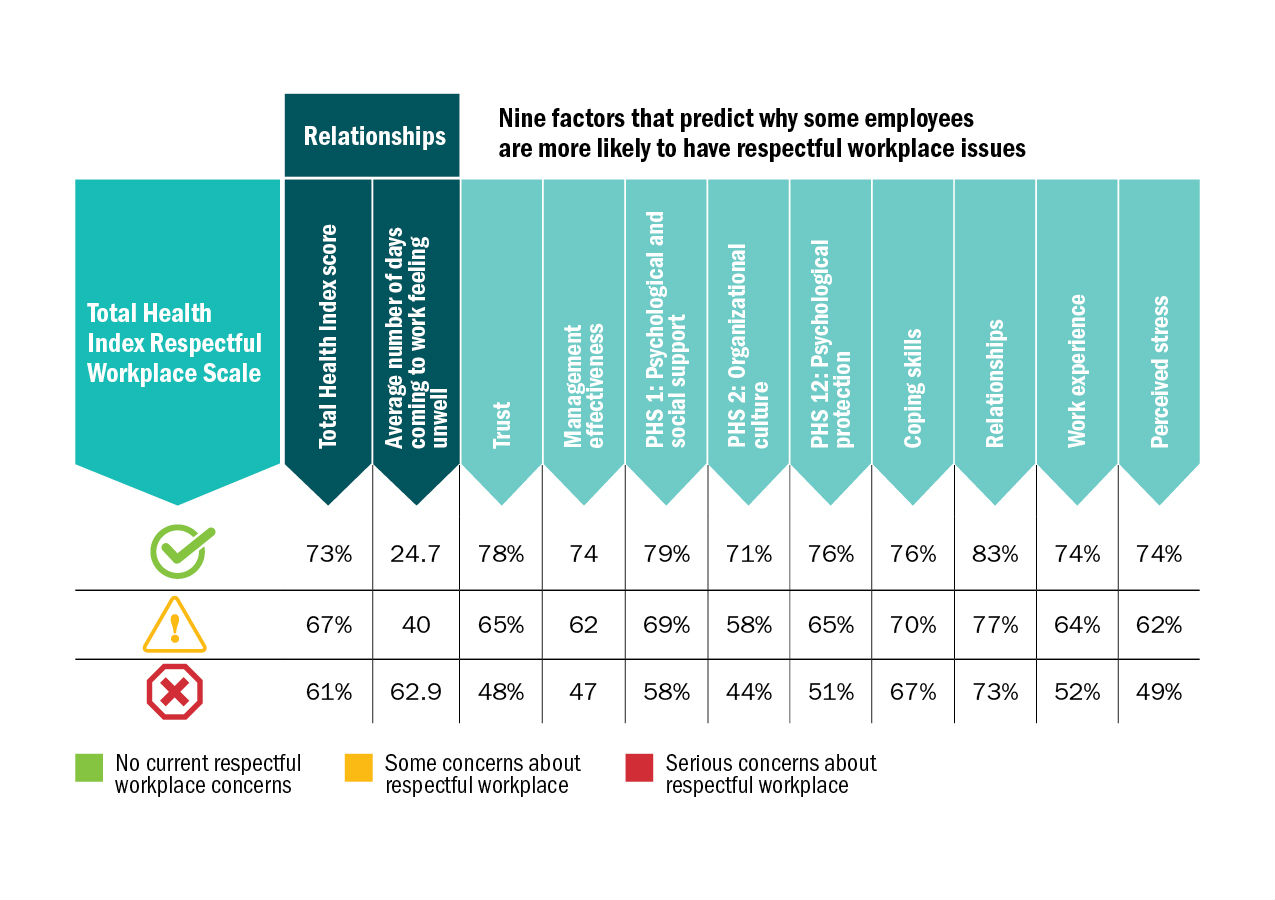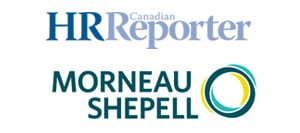Workplace scale measures employees’ personal experiences and observations

Zero-tolerance cultures are constantly monitoring and reacting to workplace events that have a negative impact on employees. The types of events vary: From incivility (such as gossiping or name calling) and personal threats arising from conflict, to online, verbal or physical bullying, sexual harassment and violence.
An effective, respectful workplace program quickly discerns the degree of risk, and the severity and proper intervention required, and then acts in a fair and objective manner.
This is critical because employees involved in the same incident may have different sets of facts and perceptions. Human perception, emotion, self-advocacy skills and workplace experience influence how employees behave and react to day-to-day interactions.
With changes in the legal landscape around bullying and harassment, and the #MeToo movement, both the legal and political climate have moved to zero tolerance. Some provinces have new occupational health and safety (OHS) legislation that makes it mandatory for employers to protect employees from bullying and harassment. Some also have provisions in their workers’ compensation act to cover employees who suffer a mental injury due to bullying or harassment.
These changes are aligned with the philosophy promoted by the National Standard of Canada for Psychological Health and Safety in the Workplace that provides a set of guidelines to assist employers in creating a psychologically safe workplace.
The Canadian Centre for Occupational Health and Safety’s Guarding Minds @ Work also introduced 13 psychosocial factors that impact employees’ response to work and work conditions that can cause psychological health problems.
The Total Health Index (THI) from Morneau Shepell has a set of scales aligned to the 13 factors to measure employees’ perceptions. This data is aggregated and reported to the employer.
In addition, the THI has a respectful workplace scale that measures employees’ personal experiences and what they have observed in the workplace. In looking at the data set of tens of thousands of files , it’s apparent there is a significant difference between women’s and men’s experiences in the workplace: Thirty-three per cent of males fall in the yellow and red category, compared to 39 per cent of females.
In exploring the relationship between the respectful workplace scales and the THI (which behaves like a resiliency scale), it’s clear the higher the THI score, the more energy and ability a person has to cope with their day-to-day life. Employees who fall in the respectful workplace category have, on average, much higher THI scores because they come to work feeling much less unwell.
Below are the factors that can help predict which employees are more like to fall into one of the three respectful workplace categories:
- trust towards leadership
- perception of how fair employees perceive their direct manager
- three 13 PHS factors: psychological and social support, organizational culture and psychological protection
- coping skills (problem-solving skills)
- the quality of personal and professional relationships
- perception of workplace experience (such as satisfaction from the job)
- perceived workplace stress.
The table above outlines the female population’s respectful workplace scores. In the yellow and red categories, females were more at risk on every measure compared to males. Much more work needs to be done to create psychologically safe workplaces for all employees and to protect females.
Employees with higher THI scores are less likely to experience a negative respectful workplace event than those with a lower result. This suggests that what employers do to make a workplace safe is important, as well as what each employee does with respect to total health (physical, mental, workplace and life health).
Here are 10 things to bolster respectful workplace programs’ effectiveness and impact:
- Conduct the psychological standard’s gap analysis to uncover risks and non-conformity issues.
- Complete annual benchmark studies to examine employees’ respectful workplace experience and track year-over-year (through the THI assessment).
- Put respectful workplace reporting into the OHS management program.
- Align respectful workplace programs with mental health strategy.
- Use an evidence-based methodology to design a respectful workplace strategy.
- Provide training for leaders on mental injuries and how to detect, intervene and investigate respectful workplace events.
- Select specific metrics to measure respectful workplace programs’ impact and results.
- Make respectful workplace policy and procedures easy to read and understand.
- Leverage online training to train all employees in respectful workplace policies, procedures and self-advocating skills annually.
- Have senior leadership set cultural expectations around values and civility, and have all leaders actively role model, promote and inquire how aligned the average employee’s experience is to cultural expectations.
Bill Howatt, Ph.D. Ed.D., is the chief of research and development, workforce productivity, at Morneau Shepell in Toronto. For more information about the Total Health Index, visit www.morneaushepell.com.
12-PART SERIES
This is the sixth of a 12-part series on total health that will explore the links between employees’ health, engagement and productivity:
- The total health framework
- The 4 pillars of the Total Health Index
- Senior leadership
- Resiliency
- Alcohol consumption
- A respectful workplace
- Manager effectiveness
- Financial health
- Going beyond traditional engagement
- Productivity
- Mental health
- Physical activity, nutrition, sleep





